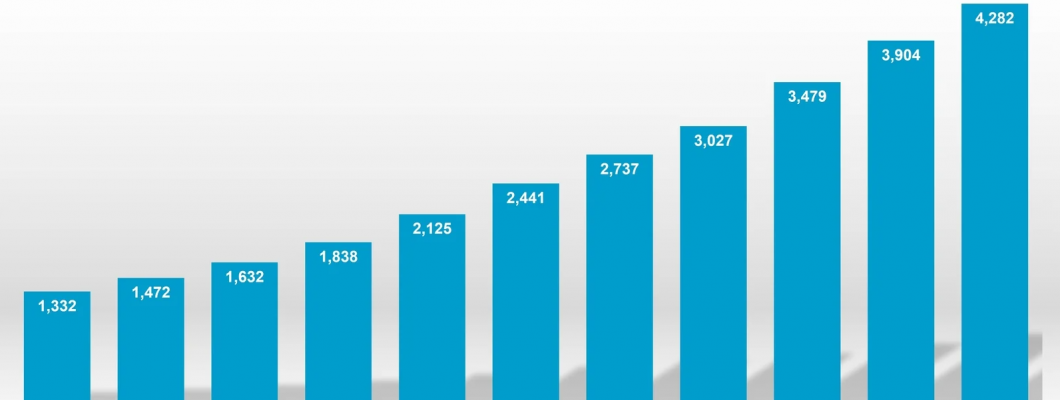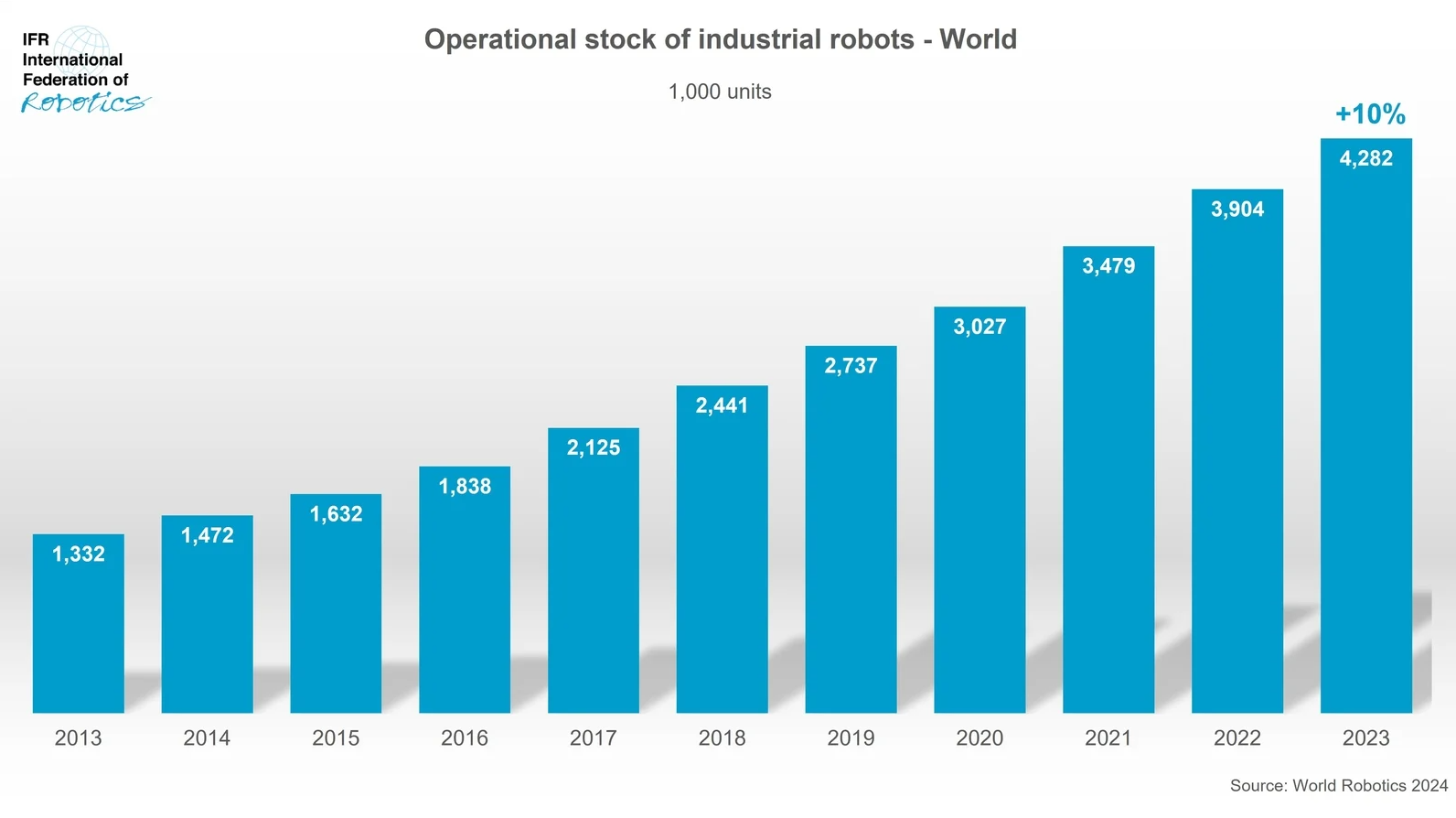
The latest report from the International Federation of Robotics (IFR) reveals a significant trend in the adoption of industrial robots globally. As depicted in the chart from "World Robotics 2024," the operational stock of industrial robots has been growing steadily, indicating the rapid shift towards automation in various industries. The graph, sourced from the World Robotics 2024 report, illustrates a steady upward trend in the number of industrial robots deployed across the globe from 2013 to 2023. The data showcases a remarkable growth of over 10% in the operational stock between 2022 and 2023, reaching 4,282,000 units.

Operational Stock of Industrial Robot in the world – 2024
Key Insights:
- 2013 to 2023 Growth: In 2013, there were approximately 1.3 million operational industrial robots. By 2023, this figure had more than tripled to 4.28 million, representing a staggering increase of over 220% in just ten years.
- Annual Growth Trends: The most notable jumps occurred between 2017 and 2021. The number of robots in operation grew from around 2.1 million units in 2017 to over 3 million in 2020, showing how companies accelerated automation strategies during the pandemic.
- Recent Growth: The stock of industrial robots reached 4.28 million units in 2023, marking a 10% increase from the previous year (2022), which recorded 3.9 million units. This continued rise demonstrates the ongoing demand for industrial automation in both manufacturing and other sectors.
Factors Driving the Surge:
Technological Advancements: Robotics technology has seen continuous improvements in performance, flexibility, and cost-efficiency, making them more attractive to a wide range of industries.
Industry 4.0 and Smart Factories: The shift towards smart manufacturing and Industry 4.0 has been a major driver. Companies are integrating robotics with AI, IoT, and data analytics to optimize production, improve precision, and enhance supply chain efficiencies.
Labor Shortages: Many countries are facing challenges related to an aging workforce and labor shortages, especially in manufacturing sectors. Automation via robotics helps to fill these gaps and maintain productivity.
Pandemic Push: The COVID-19 pandemic intensified the need for automation as companies sought to minimize human contact and disruptions in production lines, leading to a rapid rise in robot adoption.
Future Outlook:
The data suggests that the momentum will continue as industries adapt to evolving market demands, technological advances, and the growing push for efficiency and sustainability. Sectors such as electronics, automotive, and logistics are likely to lead the charge in adopting robotic systems, further fueling the global stock of operational industrial robots in the years to come. As technology continues to advance, we can expect to see further innovations in industrial robotics. Collaborative robots (cobots) are gaining popularity, working alongside human workers to enhance productivity and safety. Artificial intelligence (AI) and machine learning will also play a crucial role in enabling robots to perform more complex tasks and adapt to changing environments.
In conclusion, the data presented in the graph highlights a remarkable growth in the global stock of industrial robots. This trend is driven by factors such as increased efficiency, improved quality, and the need to address labor shortages. As automation technologies continue to evolve, we can anticipate even greater adoption of industrial robots across various industries.
